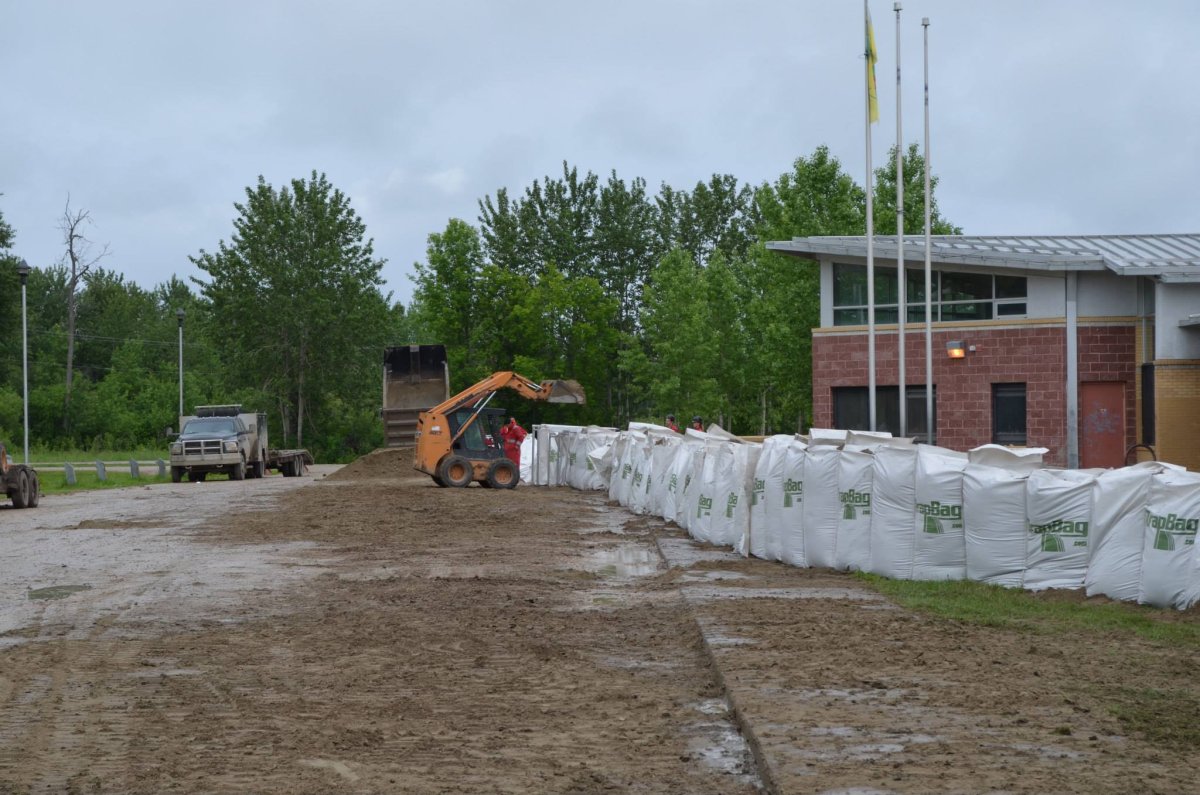REGINA – Leaders of the evacuated Saskatchewan community of Cumberland House are assuring people their homes and pets are safe and being cared for.

Cree Nation Chief Lorne Stewart and Mayor Val Deschambeault said Wednesday there are 110 people in the community – emergency workers, heavy equipment contractors, medical personnel and security.
“We would like to reassure community members that security for all homes is being provided around the clock,” said Stewart.
“There are also personnel solely assigned to feeding and dealing with family pets left in the community due to the evacuation.”
All workers still left on site are receiving food services at Charlebois School and pet food is being flown in as required.
The community of 2,300 was evacuated as a precaution last weekend because of floodwater surging into Saskatchewan from Alberta.
“Construction has been underway around the clock since June 23, 2013, with efforts focusing on containing and minimizing flood damage through sandbagging, building dykes and berms to protect homes and community infrastructure,” said Deschambeault.
Meanwhile, at least one cattle rancher says he has been forced to send his animals to auction because of overland flooding.
Gerald Lambert and his father have been farming near Cumberland House for 35 years, but now he has decided to sell his herd and retire.
“I’ve had enough time to make a decision and was given a couple days notice to make my decision,” Lambert said. “I talked to the Ministry of Agriculture … to see what kind of funding and they couldn’t provide a definite if I’d get funding or not.”

Get daily National news
That uncertainty and the fact he was told his pastures would be under water made it easier for him to opt for retirement, Lambert said.
He’s given his hay bales to another farmer who plans to risk leaving his cows in the area. Lambert said he considered taking his cattle to a community pasture, but decided there would be nothing for him to return to.
Flooding was also bad in 2011 for the Cumberland House area.
“Our fields didn’t flood in 2011. We were able to hold the water back. But this year the water a is going to be two feet higher.”
Lambert said it would have cost him a lot of money had he kept his cattle because he would have had to purchase hay bales for the rest of the year.
In the southwest, a sizable amount of farmland near the Alberta boundary was under water Wednesday, said Duane McKay, the province’s commissioner of emergency measures.
“A significant amount of ag land is flooding and some of this land is either crop or pastureland for cattle, so we are monitoring those situations as they come in,” McKay said in a briefing in Regina.
McKay said there were also some reports of homes being flooded.
“There are some photos taken by ranchers in that particular area… that show signs of flooding as (water) backs up.”
McKay said officials are contacting anyone experiencing a flooded home and also want to ensure that cattle that may be stranded by rising water have enough to eat.
There was better news in Saskatoon where the South Saskatchewan River’s flow appeared to have stabilized.
“The biggest thing that we want to emphasize now is that we are looking for stability,” said Saskatoon fire Chief Dan Paulsen.
“The water flows are very stable and we are getting no indications that there will be any changes at this point through the water levels coming in.”
Water from Alberta has been entering Lake Diefenbaker but because of outflows there should be room for excess, Paulsen said.
The City of Saskatoon Emergency Measures Organization downgraded its response level Wednesday.
“At this time everything is status quo.”
Water levels were still rising on the North Saskatchewan River near Prince Albert and peaks were already showing on the river near North Battleford.







Comments